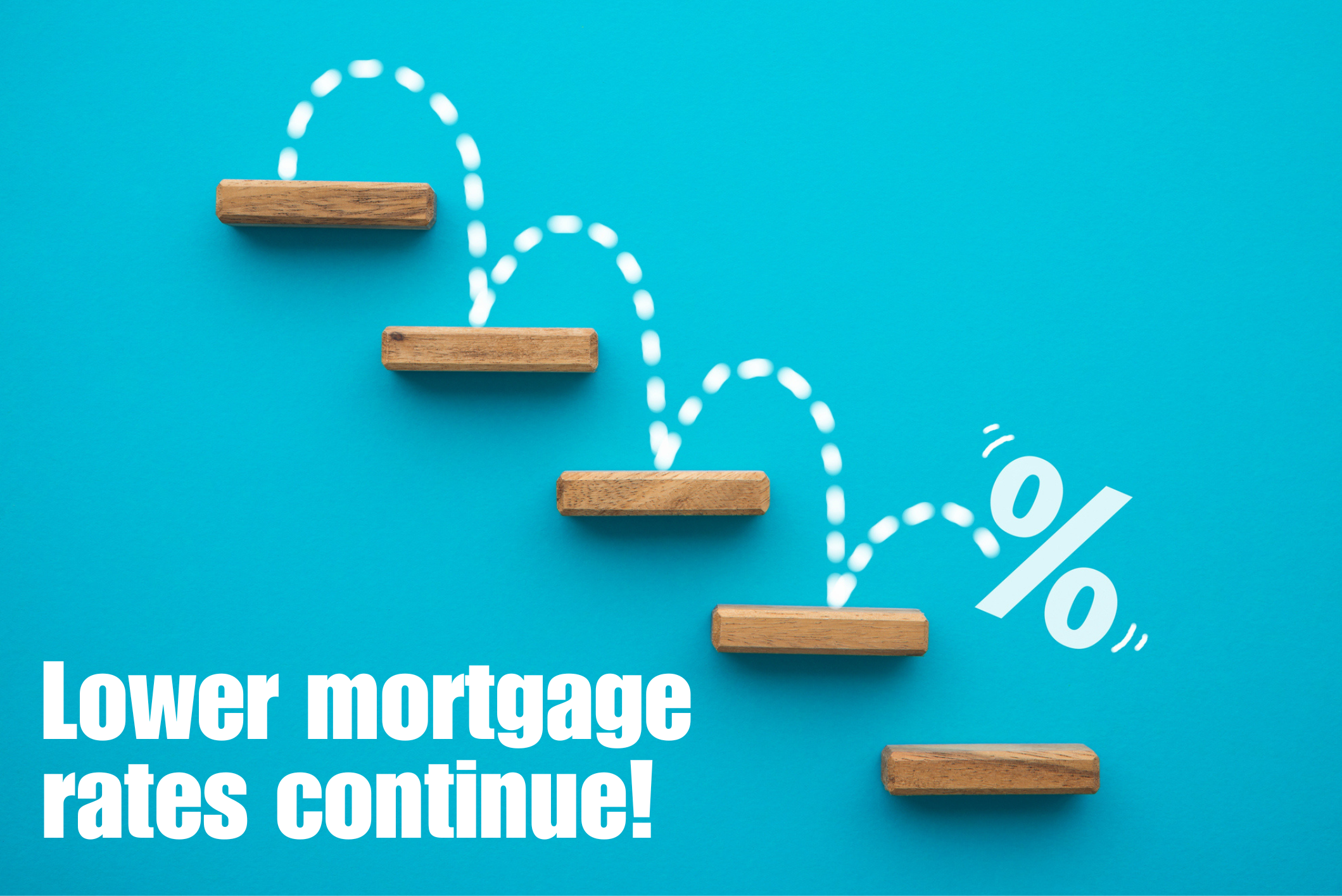|
Mortgage rates have held onto the lower rate environment for over 8 weeks now. That is two weeks longer than the 6-week run we had last year before mortgage rates went back up again. Hopefully we are at the beginning of an extended run of lower mortgage rates that can last well into next year. |
|
With the recent rate drop, I have been very busy with both mortgage refinance transactions and mortgage loans used to purchase real estate. I have been running reports to identify my existing clients who can benefit from a mortgage refinance. To reiterate from my previous newsletters and posts, if your current mortgage rate is above 6.5%, it is time to investigate a mortgage refinance. If you meet this criterion and I have not yet reached out to you, please feel free to reach out to me via phone, 510-853-2407, or e-mail, vic@vicjoshi.com. There are a few reasons to be optimistic for further reductions in mortgage interest rates. Federal Reserve Chair Jerome Powell signaled that the central bank may halt the reduction of its balance sheet in the coming months. Since 2022, the Fed has been slowly unwinding the trillions of dollars in assets it purchased during the pandemic to support the economy. By adding to the inventory of treasury bonds in the marketplace, the Fed had been increasing bond supply and when there is more supply of treasury bonds than there is demand to purchase treasury bonds, bond yields rise with mortgage rates increasing at the same pace. A pause in this tightening process can help stabilize or improve mortgage rate conditions. Powell also noted that labor market conditions are continuing to soften, reinforcing investor expectations for additional rate cuts at the October 29th and December 10th Fed meetings. Even with limited new government data due to the shutdown, the Fed sees declining job availability and slower hiring momentum. The softening of the US economy will put more pressure on the Fed to stimulate the economy through lower interest rates. Although the Fed lowering their target Fed Funds rate doesn’t immediately impact mortgage rates, mortgage rates do eventually follow the Fed Funds rate. Meanwhile, Susan Collins, President of the Boston Fed, echoed support for further rate cuts to help the labor market while keeping inflation in check. She noted that the number of new jobs needed each month to maintain stable unemployment is now roughly half of pre-pandemic levels, which may influence how aggressively the Fed moves. The Fed is in a tough spot with economic pressure pulling them in multiple directions when it comes to interest rates. A slowing economy and jobs market puts pressure on the Fed to cut their target rate, the Fed Funds, while inflationary pressure created by the US tariff policy puts pressure on the Fed to leave rates where they are or to increase the Fed Funds rate. I have had many borrowers ask me if waiting until next year makes more sense. If you can save .5% of rate with zero closing costs, where the lender is giving a rebate at closing to offset all the one-time third part costs and fees, it makes more sense to do it now as insurance against a volatile market and then do it again next year if rates continue to fall. Last year, some of you took that advice and have rates that are as good as what we are seeing now and were protected from the rising rates of the last 12 months. Others waited until now and missed out on a year of savings. It’s better to take the savings now since we have no idea what the future will bring. If you do a zero closing cost refinance, then you can do it again when the opportunity strikes with no hesitation and no negative consequences. |
As always, your mortgage guy,
Viral (Vic) Joshi
Home of Real Mortgage Advice®



